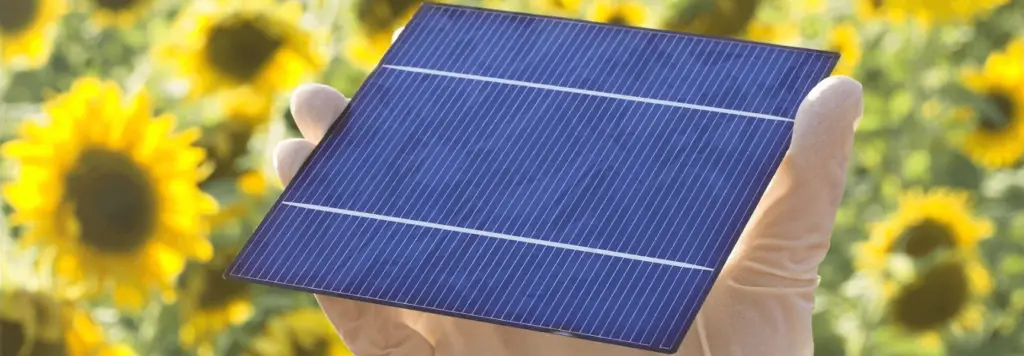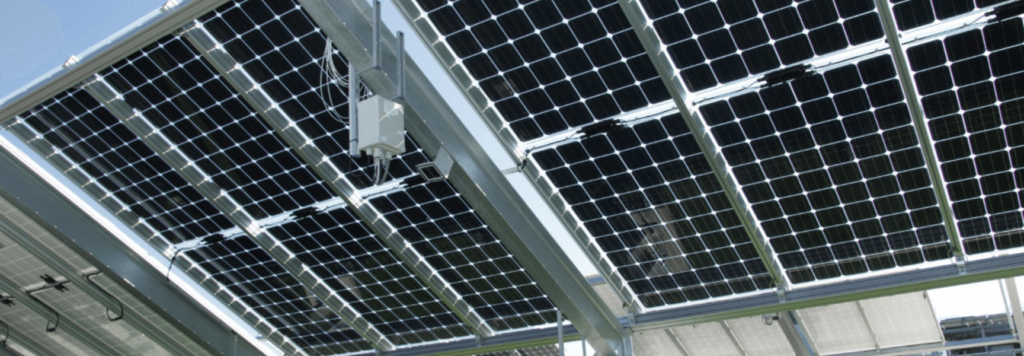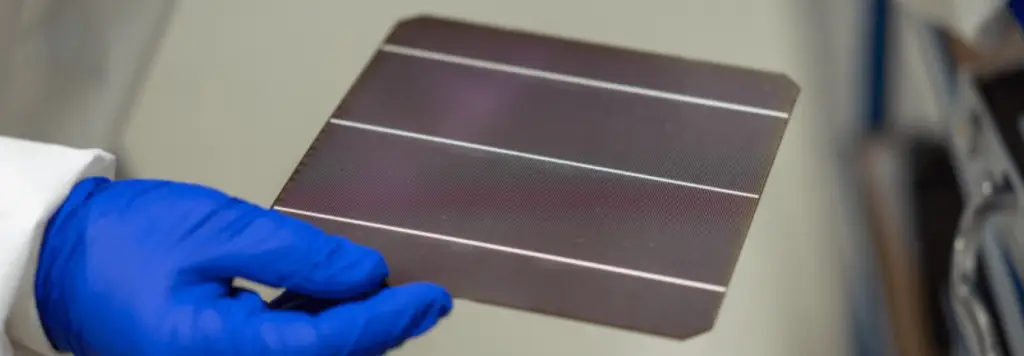Did you know that the solar energy market is expected to grow by 20% annually over the next decade? Cutting-edge technologies are driving this boom! In this article, we’ll explore some of the most exciting advancements in solar energy, including roll-to-roll printed solar cells and self-healing solar cells, and how these innovations can benefit your Florida business. Whether you own a beachfront hotel in Tampa or a tech startup in Port Saint Lucie, this guide will help you lower your power bills, protect against natural events, and comply with sustainable regulations.

Source: Specific-IKC
Roll-to-Roll Printed Solar Cells
Overview: Roll-to-roll printed solar cells are a breakthrough technology that allows for the mass production of lightweight and flexible solar panels.
Technology Explanation: This process involves printing photovoltaic materials onto flexible substrates, similar to how newspapers are printed. This method significantly reduces manufacturing costs and increases production speed. According to a recent report by the Fraunhofer Institute for Solar Energy Systems, this technology can cut production costs by up to 50%.
Benefits for Businesses:
- Cost-Effective: The lower production costs translate to more affordable solar panels for businesses, making it easier to invest in solar energy.
- Flexibility: These flexible panels can be installed on a variety of surfaces, including rooftops, walls, and even vehicles, providing more opportunities to harness solar power. Imagine the potential for integrating solar cells into building materials or even corporate vehicles!
Current Applications and Future Potential: Currently, roll-to-roll printed solar cells are used in portable solar chargers and building-integrated photovoltaics. The potential for this technology is vast, with future applications possibly including solar-powered clothing and devices, making solar energy even more accessible and versatile.

Source: Tech Xplore
Self-Healing Solar Cells
Overview: Self-healing solar cells are designed to repair themselves when damaged, significantly extending their lifespan and efficiency.
Technology Explanation: These cells use a special polymer coating that can automatically heal micro-cracks and other minor damages, ensuring continuous performance. Research from the University of California, Riverside indicates that self-healing solar cells can recover 90% of their efficiency within 24 hours of damage.
Benefits for Businesses:
- Longevity: With the ability to self-repair, these solar cells can last much longer than traditional panels, providing a better return on investment.
- Reduced Maintenance Costs: Businesses can save on maintenance and replacement costs, making solar energy even more economically viable.
Current Applications and Future Potential: While still in the research phase, self-healing solar cells have the potential to become standard in harsh environments, reducing the need for frequent maintenance and replacements. This technology could be particularly beneficial for businesses in areas prone to extreme weather conditions.

Source: PV Magazine
Bifacial Solar Panels
Overview: Bifacial solar panels are a type of solar panel that can capture sunlight from both sides, significantly increasing their efficiency and energy output.
Technology Explanation: These panels use transparent backsheets or double glass to allow sunlight to enter from both the front and back, effectively capturing reflected light from the ground or surrounding surfaces. According to the International Renewable Energy Agency (IRENA), bifacial solar panels can produce up to 30% more energy than traditional panels.
Benefits for Businesses:
- Increased Efficiency: By capturing light from both sides, these panels generate more electricity from the same amount of sunlight.
- Space Optimization: This increased efficiency makes bifacial panels an excellent option for businesses with limited installation space.
Current Applications and Future Potential: Bifacial panels are currently used in various commercial and utility-scale projects. As technology advances, their application could expand to more urban settings and integrated building designs, maximizing energy production even in constrained spaces.

Source: Oxford PV
Perovskite Solar Cells
Overview: Perovskite solar cells are an innovative type of solar cell that promises higher efficiency at a lower cost compared to traditional silicon-based cells.
Technology Explanation: Perovskite cells use a unique crystal structure that allows for high efficiency in converting sunlight to electricity. Research from Oxford PV shows that these cells can achieve efficiencies of over 25%, which is higher than many conventional solar panels.
Benefits for Businesses:
- High Efficiency: The high efficiency of perovskite cells means more energy production from the same surface area, which is especially beneficial for businesses with limited roof space.
- Cost-Effective: These cells are cheaper to produce due to the lower cost of materials and simpler manufacturing processes.
Current Applications and Future Potential: Currently in the advanced research and early commercialization stages, perovskite solar cells are being tested in various applications, including tandem cells combined with silicon for even higher efficiencies. Their potential to transform the solar industry makes them a promising option for future energy solutions.

Source: World Bank
Floating Solar Farms
Overview: Floating solar farms are solar power installations located on bodies of water, such as reservoirs, lakes, and ponds.
Technology Explanation: These solar panels are mounted on floating structures that rest on the surface of the water. This setup not only saves valuable land space but also benefits from the cooling effect of water, which can improve panel efficiency. According to the World Bank, floating solar installations can increase efficiency by up to 10%.
Benefits for Businesses:
- Land Conservation: Utilizing water surfaces for solar installations reduces the need for land, which is especially advantageous in densely populated or agricultural areas.
- Increased Efficiency: The cooling effect of water helps maintain optimal panel temperatures, enhancing performance and longevity.
Current Applications and Future Potential: Floating solar farms are being deployed in several countries, including Japan, China, and India, with significant projects planned in the U.S. Their potential to combine with hydroelectric power plants and other water-based infrastructure could lead to innovative hybrid energy solutions.
Practical Implications for Florida Businesses
Cost Savings: By adopting these cutting-edge technologies, Florida businesses can significantly reduce their energy costs and achieve faster payback periods. For example, integrating bifacial solar panels or perovskite solar cells can lead to higher energy production and lower utility bills.
Resilience: Innovations like self-healing solar cells and durable bifacial panels can withstand harsh weather conditions, ensuring consistent energy production even during extreme events. This resilience is crucial for businesses looking to protect their operations and investments from the impacts of hurricanes and other natural events.
Sustainability Compliance: Implementing advanced solar technologies can help businesses comply with local and federal sustainability regulations, enhancing their reputation and contributing to environmental conservation. Adopting these technologies demonstrates a commitment to sustainability, which can improve brand image and customer loyalty.
in conclusion...
To recap, the advancements in solar energy, from roll-to-roll printed solar cells to self-healing technologies, offer incredible opportunities for Florida businesses to save on energy costs, protect their investments, and contribute to sustainability. These innovations not only provide practical benefits but also position your business at the forefront of the green energy revolution.
Ready to explore these cutting-edge solar solutions for your business? Drop us a line below and we’ll help you explore new ways of innovating your business.



